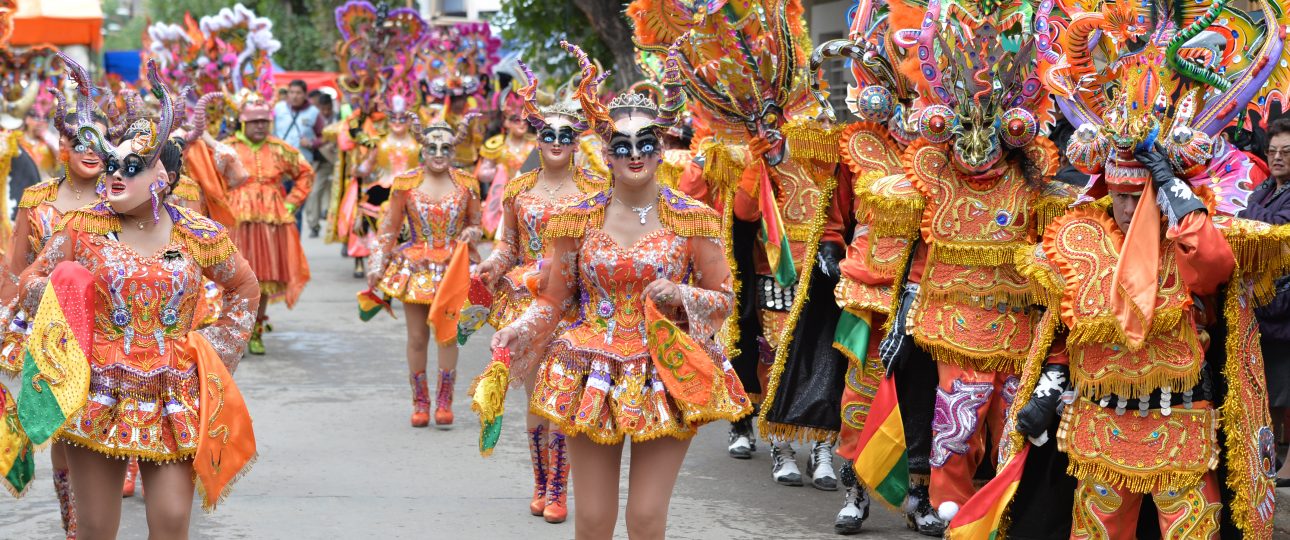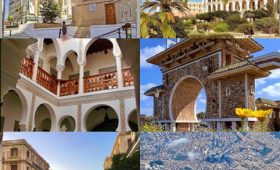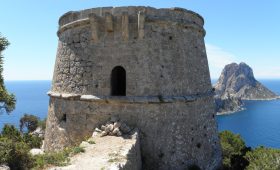Exploring the Oruro Carnival
The Oruro Carnival in Bolivia is a vibrant celebration that blends indigenous traditions with Christian rituals. Recognized by UNESCO as a Masterpiece of the Oral and Intangible Heritage of Humanity, this festival is a cultural spectacle that draws visitors from around the world.
Historical and Cultural Context
The roots of the Oruro Carnival trace back to pre-Columbian times. Originally an indigenous festival, it was transformed during the Spanish colonial period to incorporate Christian elements. The native Itu ceremonies were banned by the Spanish in the 17th century, but the Uru people continued to celebrate in a form that honored both their traditions and the Virgin of Socavón, also known as the Virgin of the Mineshaft.
A pivotal moment in the festival’s history occurred in 1756 when a mural of the Virgin Mary reportedly appeared in a mineshaft. This event solidified the carnival’s association with the Virgen de la Candelaria. Today, the most significant events take place around the Sanctuary of the Socavón, a key site of worship during the festivities.
The Carnival Experience
Each year, the Oruro Carnival features over 48 groups of folk dancers performing 18 different traditional dances. The Diablada, or Dance of the Devils, is the most iconic, characterized by its elaborate costumes and masks. These performances are not just entertainment; they are a living narrative of Bolivia’s cultural heritage, depicting ancient myths and historical events.
As a traveler, joining the locals in dance is a highlight. The energy is infectious, and the hospitality of the Bolivian people is heartwarming. Be prepared to be swept up in the excitement and perhaps even join the parade yourself.
Planning Your Visit
The Oruro Carnival takes place on the Saturday before Ash Wednesday, typically in February or March. To fully experience the festival, plan to arrive during the weekend when the main parades and competitions occur. The city is bustling with music, dancing, and vibrant costumes.
Accommodations fill up quickly, so book your hotel at least three months in advance. If you’re traveling from another continent, fly into El Alto International Airport in La Paz, then take a domestic flight or a bus to Oruro. The journey offers stunning views of the Bolivian landscape.
Getting Around Oruro
Once in Oruro, getting around is straightforward. The city offers a variety of transportation options, including buses and taxis. Buses are affordable and cover most areas, while taxis provide a more flexible and convenient way to explore. Always negotiate the fare before starting your journey to avoid misunderstandings.
Highlights of the Carnival
The Parade of Folkloric Dances
The parade is the centerpiece of the Oruro Carnival, featuring a dazzling array of dances and music. Each group represents a different tradition, from the devilish Diablada to the colorful Morenada. Find a good spot along the parade route to fully appreciate the spectacle.
The Sanctuary of the Socavón
This sacred site is central to the carnival’s religious aspect. The sanctuary houses an altar dedicated to the Virgin of the Socavón. Visiting offers a serene contrast to the lively celebrations outside, providing insight into the spiritual side of the festival.
Calle La Paz
During the carnival, Calle La Paz becomes a hub of activity. It’s lined with stalls selling traditional crafts and souvenirs. Street performers and food vendors add to the lively atmosphere. Don’t miss trying local delicacies like salteñas and anticuchos.
In summary, the Oruro Carnival is a unique blend of cultural traditions and religious devotion. It’s a celebration that offers a deep dive into Bolivia’s rich heritage. While the festival is a feast for the senses, it’s also a testament to the enduring spirit of the Bolivian people. If you have the chance to visit, it’s an experience that will stay with you long after the last dance has ended.



